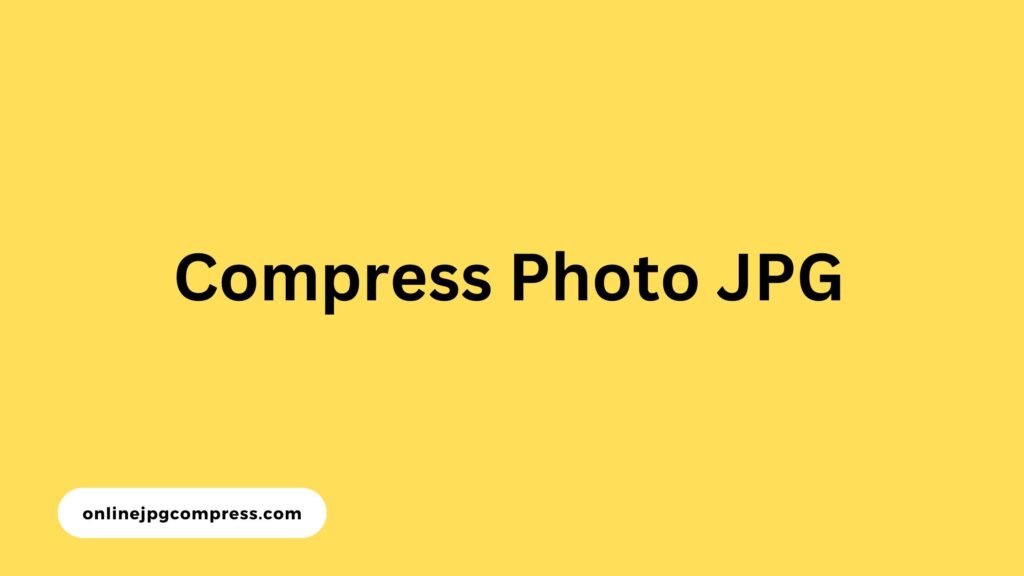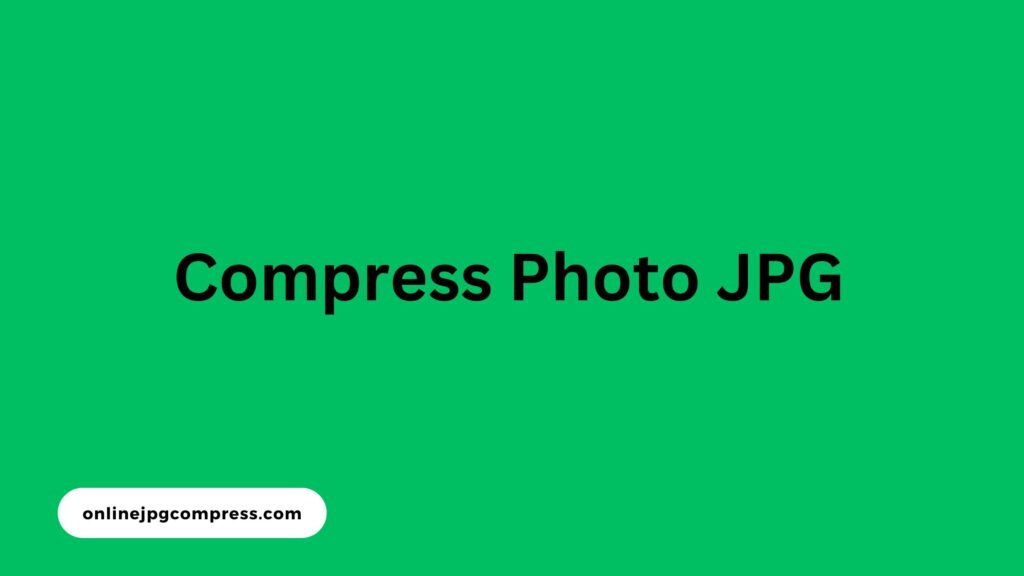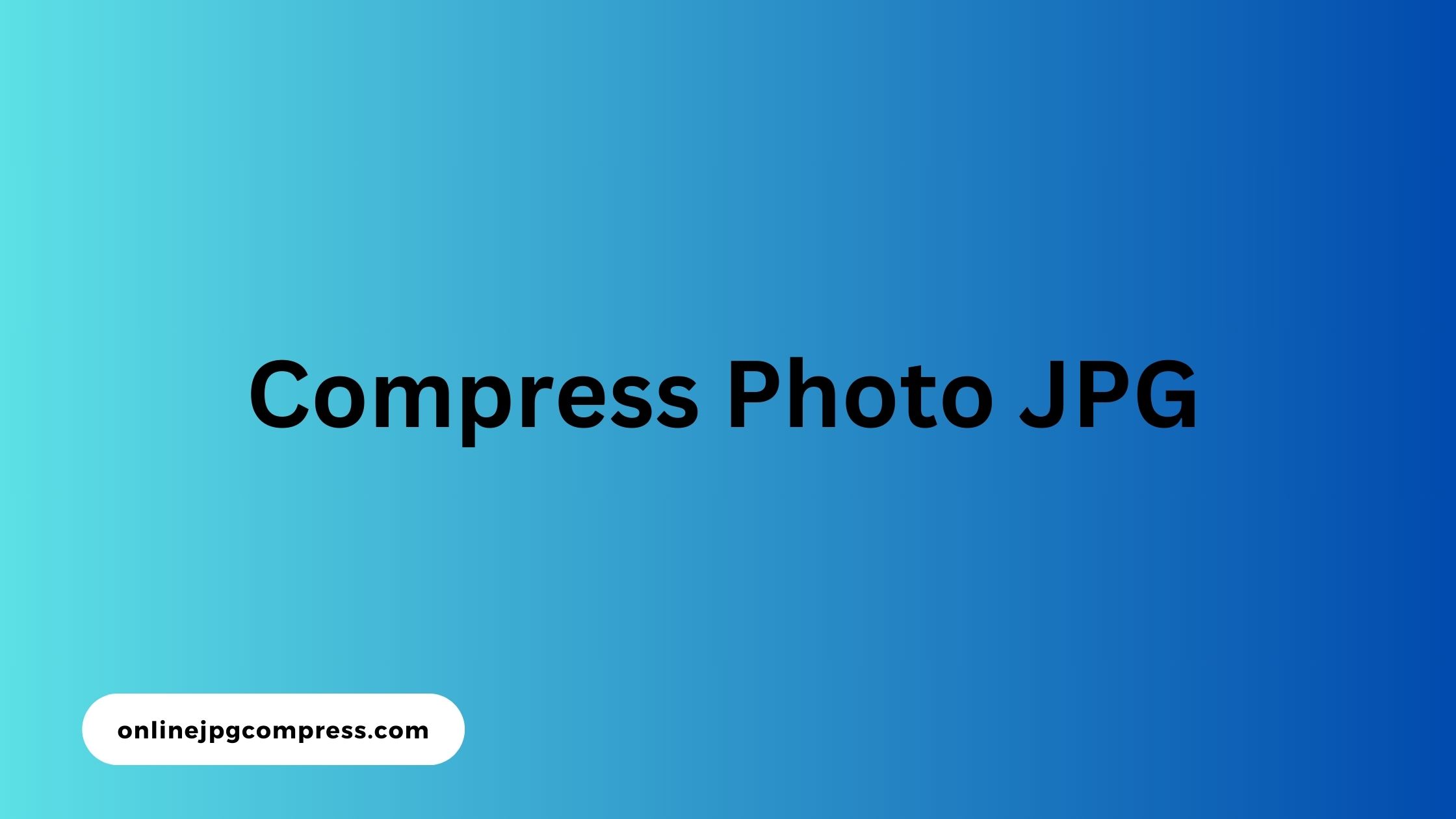Introduction
In the fast-paced digital landscape of the United States, where visuals play a crucial role in online engagement, the need to optimize file sizes without Compress Photo JPG image quality is more relevant than ever.
This comprehensive guide will delve into the importance of compressing JPG photos, the benefits it offers, and practical methods for users in the United States.
Read this – Compress Picture JPG for Optimal Digital Performance US Tutorial

Understanding the Need for Compressing Photo JPG
File Size and Loading Speed: Large image files can significantly impact website loading times. In a society where attention spans are short, optimizing your website’s loading speed is paramount.
Compressing JPG photos ensures that your visuals maintain quality while contributing to a smoother online experience for users.
Bandwidth Considerations: In the United States, where internet usage is widespread and varied, considering bandwidth is crucial.
Compressing JPG photos reduces the amount of data transferred when users access your website or view your content, making it more accessible to a broader audience.
Mobile Optimization: With the prevalence of mobile devices, optimizing images for mobile viewing is essential.
Compressed JPG photos strike a balance between quality and file size, ensuring that your visuals look crisp on various screen sizes without consuming excessive mobile data.
Benefits of Compressing Photo JPG
Faster Website Loading: Compressed JPG photos contribute to faster website loading times. This is a critical factor for user satisfaction, as sluggish websites can lead to higher bounce rates.
Quick-loading visuals enhance the overall user experience, increasing the likelihood of engagement.
Improved SEO Performance: Search engines, including Google, consider page loading speed as a ranking factor.
By compressing JPG photos and optimizing your website’s performance, you positively influence your SEO rankings. This, in turn, enhances your online visibility and reach.
Storage Efficiency: For individuals and businesses managing large volumes of images, compressed JPG photos mean more efficient storage.
This is particularly beneficial for e-commerce websites, photographers, and anyone dealing with extensive visual content, allowing for better organization and accessibility.
How to Compress Photo JPG: Practical Methods
Online Tools and Platforms: Numerous online tools and platforms cater specifically to compressing JPG photos.
Websites like Tiny PNG, JPEG-Optimizer, and Compressor.io offer user-friendly interfaces for uploading and compressing images without compromising quality.
Image Editing Software: Professional image editing software like Adobe Photoshop provides advanced compression options.
Users can manually adjust compression settings to find the optimal balance between file size and image quality. This method offers more control for those with specific requirements.
WordPress Plugins: For website owners using WordPress, there are dedicated plugins designed to streamline the compression process.
Plugins like mush and Short Pixel integrate seamlessly into your WordPress site, automatically compressing JPG photos upon upload.

Conclusion
Compressing JPG photos is a savvy practice for individuals and businesses alike in the United States. By optimizing image file sizes, you enhance website performance, improve user experience, and contribute to better SEO rankings.
Whether you choose online tools, professional software, or WordPress plugins, integrating compression into your digital workflow is a smart investment for efficient visual presentation in the digital age.

1 thought on “The Art of Compress Photo JPG for Efficient Digital Display”